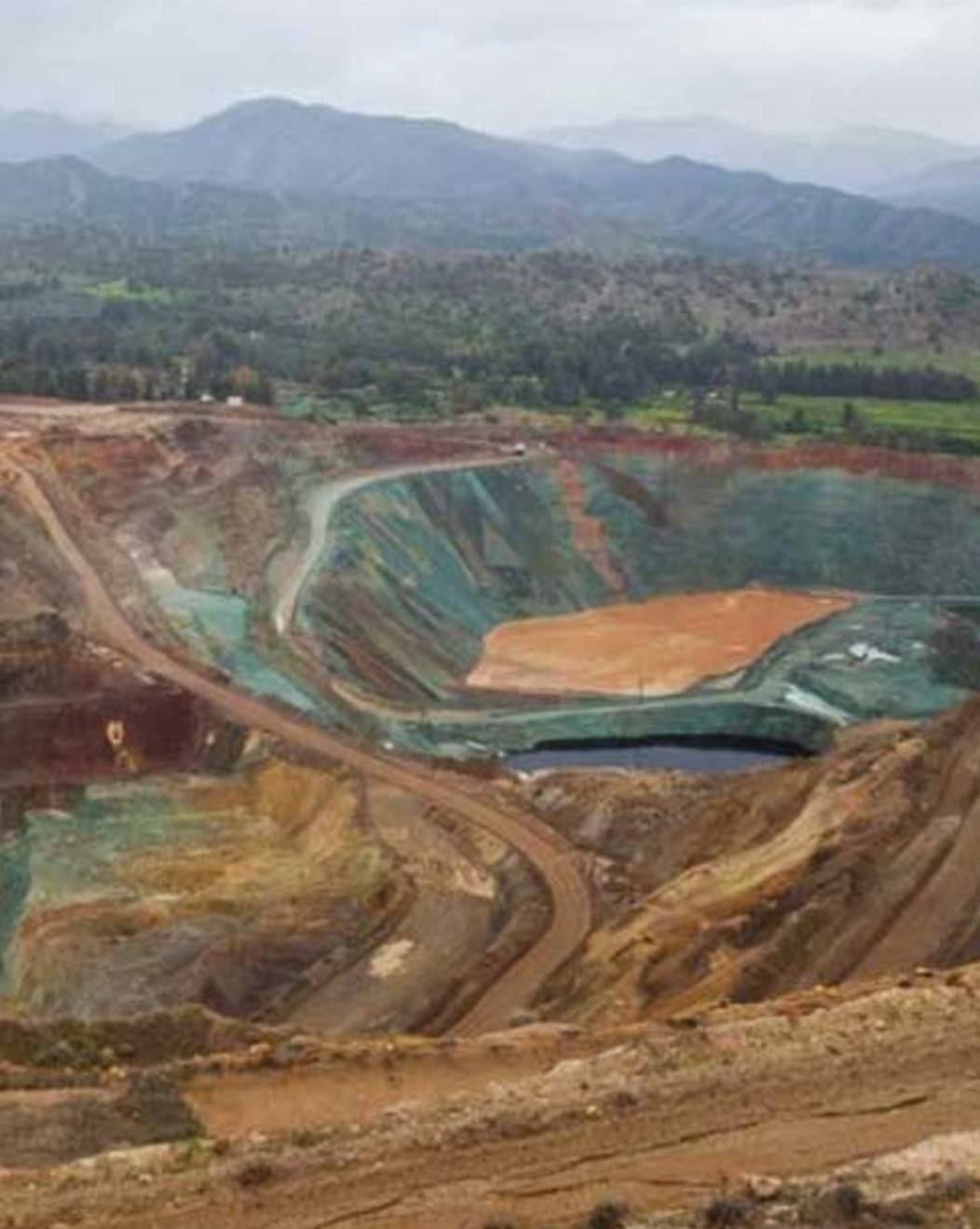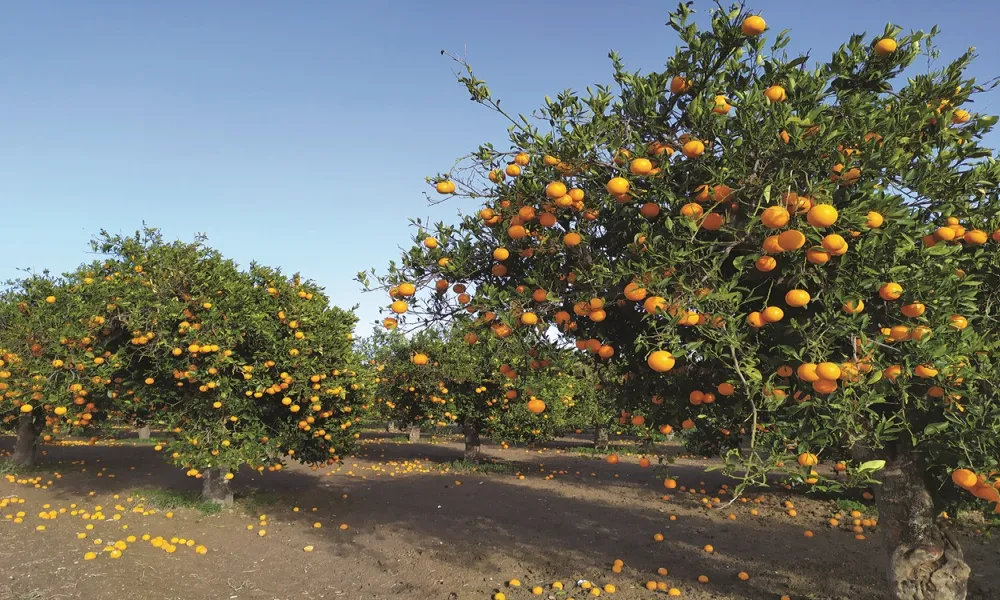Significant work carried out in recent months by the Bi-communal Technical Committee on the Environment is now before Nikos Christodoulides and Tufan Erhürman. Following the change of page brought about by the election of the new Turkish-Cypriot leader, the two are expected to highlight this work jointly and proceed to concrete political decisions.
It concerns five areas of “green” confidence-building measures (CBMs). The first three: environmental protection, climate change, and the impact of mining areas, were agreed by both sides at the informal five-party meeting on Cyprus in Geneva last March, while the other two: monitoring of air quality and tackling microplastic pollution were added at the informal five-party meeting in New York last July.
These initiatives address issues that affect the daily lives of both communities and represent shared challenges, since without cooperation no effective solutions can be achieved.
Initiatives such as protecting the island against the looming threat of the decimation of its citrus crops, as plant diseases know no dividing lines and can only be tackled on a whole-island basis — by the most destructive citrus disease globally, the huanglongbing (HLB) bacterium, known as citrus greening or “yellow dragon disease”, as well as the preparatory work for the removal of toxic lakes in the Lefka area, from which irrigation water is channelled to vegetables consumed across the island through Green Line trade, have advanced to such an extent that the Greek-Cypriot Co-Chair of the Bicommunal Technical Committee on the Environment, Michalis Loizides, now speaks of successful action.
Appeal to the leaders for agreement
Speaking to Politis about the stage of implementation of the green CBMs, Mr Loizides expressed the wish, and made the suggestion, that with the change in Turkish-Cypriot leadership, the two leaders should reach an agreement allowing the Bicommunal Committees to operate at their full potential. He also urged Christodoulides and Erhürman to showcase the progress achieved so far on the green CBMs and to set them out clearly again within specific timetables, with defined proposals, actions and follow-up mechanisms.
The yellow dragon of citrus
Under the heading “environmental protection”, measures against the citrus greening bacterium (huanglongbing, HLB) which threatens to wipe out all citrus fruit, are progressing satisfactorily with excellent cooperation between scientists from both communities.
According to foreign experts recently on the island for advisory support, it is only a matter of time before the bacterium appears in Cyprus. Its main carrier, the Asian citrus psyllid (Diaphorina citri), has already spread island-wide after first being detected in 2023 at Fasouri, Limassol. Notably, this insect has not been found in any other EU member state - only in Cyprus - and the European Commission’s competent services are monitoring the issue closely.
The two communities are called to cooperate so that, when the bacterium arrives, they can limit the damage, following the example of regions such as California. In contrast, in Florida, where no timely preventive action was taken, the disease destroyed 75 per cent of citrus production.
Mr Loizides said plant-pathology experts in the Committee agreed to propose a specific package of actions to the two leaders:
-
Common database – At regular intervals, field data will be shared on a joint database managed by the UN Development Programme (UNDP). This will also include data on other fast-spreading pathogens affecting species such as prickly pears, palm trees, courgettes, melons, cucumbers and pines.
-
Chemical control – For major citrus plantations, chemical treatment will be carried out only with specific, EU-approved formulations.
-
Biological control – In non-sprayable areas (yards, pavements, parks), a mutually accepted parasitoid that preys on the Asian citrus psyllid will be released across the island, preventing the introduction of competing parasitoids. Releases have already begun.
Another disease soon to be addressed through the Committee, following similar joint practices, is the prickly-pear mealybug, which covers plants and fruit with a cotton-like substance leading to necrosis and drying.

Toxic lakes
Under the heading “impacts in mining areas”, the two leaders are called upon to take a political decision for the removal of toxic waters from a one-square-kilometre stretch of lakes in Lefka.
The American company CMC, which operated the mine, left Cyprus after the invasion, leaving behind highly toxic waste ponds. Poorly constructed from the outset, they overflow each year, contaminating the local aquifer. Large quantities of fruit and vegetables irrigated with this water are then sold across Cyprus through Green Line trade.
Mr Loizides said all is ready for a 20-year decontamination project to begin, from both Turkish-Cypriot and Greek-Cypriot companies ready to undertake transport and treatment, to the planned routes through the mountains to avoid disturbing residents. What remains, he stressed, is the political decision of the two leaders, calling it “a disgrace” that the problem persists 51 years on.
At the same time, the Committee’s members have decided to create a platform to record all quarries and inactive mines across Cyprus, complete with essential information on each site.
The Cypriot honeybee
Returning to “environmental protection”, the agenda also includes efforts to preserve the Cypriot honeybee subspecies, Apis mellifera cypria. This native bee, naturally irritable and defensive due to its long struggle against its predator, the oriental hornet (Vespa orientalis), has in recent years been misunderstood by many beekeepers, who have imported foreign bee strains seeking easier management.
Although perfectly adapted to Cyprus’s conditions, the native bee is now under severe pressure and at risk of being replaced, with consequences for biodiversity. Mr Loizides said the Committee’s indications show that only about 25 per cent of bees in the occupied areas still belong to the Cypriot strain, a trend also observed in the government-controlled areas. The Committee has already held four sessions on this issue, and its next step will be to promote concrete actions to safeguard the Cypriot bee.
Packs of wild dogs
Also under the environmental pillar falls the problem of feral dog packs. These former strays have reverted to a wild state, reproduce freely, and are increasingly appearing in villages such as Kambos and Tsakistra. In the past six or seven years, incidents have been recorded of people being surrounded or attacked, while mouflons have been killed. The issue also affects parts of the Paphos Forest and the Lefka area.
Mr Loizides said the number of stray dogs across the island may reach 200,000. As these animals cannot be caged, the Committee has begun discussions on creating a large fenced enclosure to contain them. It also plans soon to address the problem of invasive fish species.
Two final themes
Under the climate-change pillar, it was agreed to compile all cases of soil vulnerability in a common database.
The two additional themes introduced last July are air-quality monitoring and microplastic pollution control.
For air quality, the sides agreed to develop a platform to inform each other about the source of smoke (whether from a fire or a factory chimney fault) drifting from the other side, crucial information for deciding whether an area needs evacuation.
For microplastics, a new initiative is beginning to manage microplastic particles detected at wastewater treatment plants across Cyprus, which are currently discharged into the soil along with sludge.
